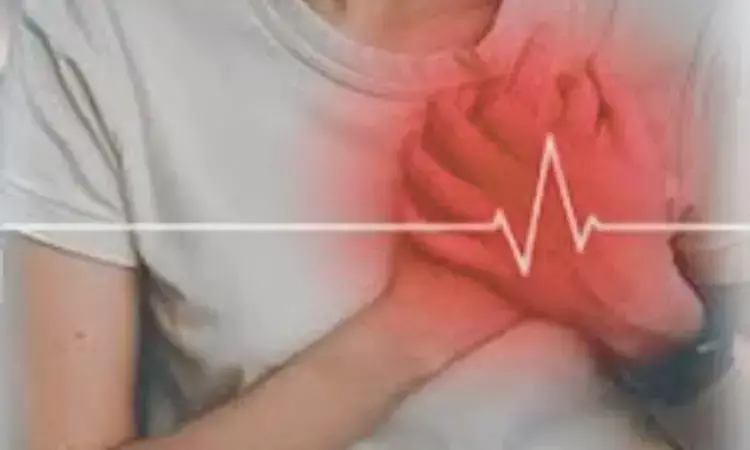- Home
- Medical news & Guidelines
- Anesthesiology
- Cardiology and CTVS
- Critical Care
- Dentistry
- Dermatology
- Diabetes and Endocrinology
- ENT
- Gastroenterology
- Medicine
- Nephrology
- Neurology
- Obstretics-Gynaecology
- Oncology
- Ophthalmology
- Orthopaedics
- Pediatrics-Neonatology
- Psychiatry
- Pulmonology
- Radiology
- Surgery
- Urology
- Laboratory Medicine
- Diet
- Nursing
- Paramedical
- Physiotherapy
- Health news
- Fact Check
- Bone Health Fact Check
- Brain Health Fact Check
- Cancer Related Fact Check
- Child Care Fact Check
- Dental and oral health fact check
- Diabetes and metabolic health fact check
- Diet and Nutrition Fact Check
- Eye and ENT Care Fact Check
- Fitness fact check
- Gut health fact check
- Heart health fact check
- Kidney health fact check
- Medical education fact check
- Men's health fact check
- Respiratory fact check
- Skin and hair care fact check
- Vaccine and Immunization fact check
- Women's health fact check
- AYUSH
- State News
- Andaman and Nicobar Islands
- Andhra Pradesh
- Arunachal Pradesh
- Assam
- Bihar
- Chandigarh
- Chattisgarh
- Dadra and Nagar Haveli
- Daman and Diu
- Delhi
- Goa
- Gujarat
- Haryana
- Himachal Pradesh
- Jammu & Kashmir
- Jharkhand
- Karnataka
- Kerala
- Ladakh
- Lakshadweep
- Madhya Pradesh
- Maharashtra
- Manipur
- Meghalaya
- Mizoram
- Nagaland
- Odisha
- Puducherry
- Punjab
- Rajasthan
- Sikkim
- Tamil Nadu
- Telangana
- Tripura
- Uttar Pradesh
- Uttrakhand
- West Bengal
- Medical Education
- Industry
ICE Noninferior to transesophageal echocardiography for preventing thromboembolic complications in AF Ablation: Study

A new clinical trial published in the Journal of the American Medical Association found that intracardiac echocardiography (ICE) matched transesophageal echocardiography (TEE) in preventing thromboembolic complications and provided added benefits in safety, efficiency, and patient comfort prior to atrial fibrillation (AF) ablation.
TEE provides high-quality cardiac imaging but requires sedation and carries risks like esophageal injury. ICE, by contrast, uses a catheter-based ultrasound probe inserted via a peripheral vein, allowing real-time intracardiac imaging without the need for general anesthesia.
The randomized clinical trial enrolled a total of 1,810 adults with AF scheduled for catheter ablation across 10 hospitals in China between August 2022 and July 2023. The participants were randomly assigned to undergo either ICE (906 patients) or TEE (904 patients) for thrombus screening before ablation. Follow-up continued for 30 days post-procedure.
The average patient age was 64.3 years, with nearly half (48%) being women. About 49% of participants had paroxysmal AF, which is a form characterized by intermittent episodes. The primary endpoint of the study was assessed by the rate of periprocedural thromboembolic events like stroke, transient ischemic attack (TIA), or systemic embolism, showed virtually identical outcomes between the 2 groups.
Thromboembolic complications occurred in 0.4% of ICE patients and 0.6% of TEE patients, which demonstrated noninferiority of ICE with statistical significance (P for noninferiority = .01). Thrombus detection rates found 2.0% in the ICE group versus 1.5% in the TEE group, where this difference that was not statistically significant. However, ICE identified slightly more thrombi outside the left atrial appendage (0.6% vs. none detected with TEE), highlighting its ability to visualize a broader range of cardiac regions.
Major bleeding associated with transseptal puncture occurred less frequently in the ICE group (0.2%) when compared with TEE (1.2%), a statistically significant reduction. Also, ICE users benefited from significantly shorter fluoroscopy exposure (average 4.2 vs. 9.3 minutes), reduced preprocedural waiting time (14.4 vs. 23.6 hours), and a lower prevalence of anxiety or depression before ablation (24.6% vs. 37.5%). Overall, these findings indicate that ICE not only matches TEE in preventing thromboembolic complications but also enhances procedural efficiency and patient well-being.
Source:
Hu, X., Jiang, W., Wang, X., Ye, P., Li, X., Wang, Y., Zheng, Q., Wang, Y., Leng, L., Zhang, Z., Han, B., Zhang, Y., Qin, M., Liu, X., Hou, X., & ICE vs TEE Study Investigators. (2025). Intracardiac vs transesophageal echocardiography in atrial fibrillation ablation: A randomized clinical trial: A randomized clinical trial. JAMA Cardiology. https://doi.org/10.1001/jamacardio.2025.3687
Neuroscience Masters graduate
Jacinthlyn Sylvia, a Neuroscience Master's graduate from Chennai has worked extensively in deciphering the neurobiology of cognition and motor control in aging. She also has spread-out exposure to Neurosurgery from her Bachelor’s. She is currently involved in active Neuro-Oncology research. She is an upcoming neuroscientist with a fiery passion for writing. Her news cover at Medical Dialogues feature recent discoveries and updates from the healthcare and biomedical research fields. She can be reached at editorial@medicaldialogues.in
Dr Kamal Kant Kohli-MBBS, DTCD- a chest specialist with more than 30 years of practice and a flair for writing clinical articles, Dr Kamal Kant Kohli joined Medical Dialogues as a Chief Editor of Medical News. Besides writing articles, as an editor, he proofreads and verifies all the medical content published on Medical Dialogues including those coming from journals, studies,medical conferences,guidelines etc. Email: drkohli@medicaldialogues.in. Contact no. 011-43720751


